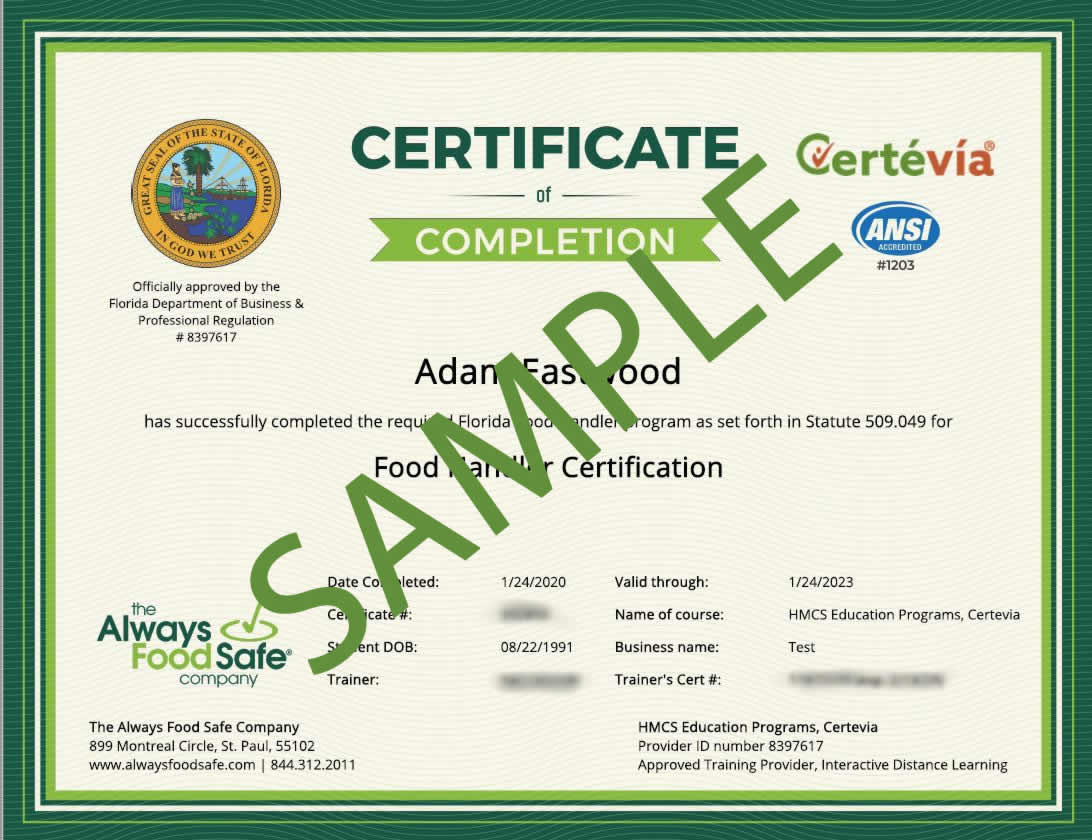Just How to Obtain Your Food Trainer Accreditation Quickly and Easily
Acquiring your food trainer qualification can appear challenging, but with a strategic approach, it can be completed effectively. Start by familiarizing on your own with neighborhood health authority needs, as these will guide your choice of an approved course customized to your demands. Whether you select an on-line platform or in-person instruction, a concentrated involvement with the product is essential. Nevertheless, recognizing exactly how to navigate the accreditation examination and succeeding revival procedures is just as essential. What are one of the most effective strategies to guarantee not only a successful certification however additionally recurring compliance in the ever-evolving landscape of food safety and security?
Understand Accreditation Demands
Obtaining a food trainer certification calls for a clear understanding of the certain requirements stated by local wellness authorities and regulatory firms. Each territory may enforce different standards and expectations, so it is crucial to look into the policies appropriate to your area. Commonly, these requirements consist of completing an accepted training program, passing an accreditation examination, and occasionally restoring the certification regularly.
First, acquaint yourself with the local laws governing food safety and handling. This may include going to the site of your local health department or contacting them directly for support. Additionally, some areas may have specific age requirements or instructional requirements, such as a minimal degree of schooling.
When you are mindful of the requirements, guarantee that the training program you pick is recognized by your regional wellness authorities. This acknowledgment guarantees that the educational program meets the required standards for efficient training in food safety and security methods.
Choose the Right Program
How can you make sure that you select one of the most suitable food trainer qualification program for your needs? Beginning by assessing the course's certification. Validate that it is recognized by your local health and wellness division or regulatory body, as this makes certain the certification will certainly be legitimate for work in your location.
Following, think about the layout of the course. Some people may like in-person training for its interactive aspects, while others might choose online courses for convenience and adaptability. Review the program content to ensure it covers important subjects such as food safety concepts, personal hygiene, cross-contamination, and proper food storage space.
Examine the period of the program and guarantee it lines up with your timetable. By thoroughly analyzing these factors, you can pick a food handler qualification program that satisfies your certain needs and prepares you sufficiently for your function in the food solution industry.
Complete the Training
Upon selecting the proper food handler certification training course, the following critical step is to finish the training. This training is made to furnish you with necessary knowledge concerning secure food handling practices, hygiene, and sanitation methods. Many courses provide a mix of on-line modules, videos, and interactive tests, allowing for an adaptable understanding experience that can be customized to your routine.
Some programs might also give situation researches or real-life circumstances to boost your understanding. This practical application of understanding is essential, as it prepares you for the obstacles you might encounter in a food solution setting.
In addition, make sure that you allocate adequate time to finish each module completely before carrying on to the following. Hurrying through the product can result in voids in read review understanding, which might impede your efficiency in future evaluations. Finishing the training with diligence will not only help with a smoother change to the following actions in obtaining your accreditation yet additionally make certain that you are well-prepared to maintain food safety and security standards in your specialist role.
Pass the Qualification Exam
After efficiently completing your food handler training, the following crucial step is to pass the certification examination. This evaluation is created to evaluate your understanding of food security concepts, methods, and policies that are crucial in the food service sector.
To prepare successfully, evaluate the materials given during your training completely. Concentrate on crucial subjects such as proper food storage, hygiene practices, cross-contamination prevention, and individual health standards. Several training programs use technique tests, which can considerably boost your preparedness for the real test.


When taking the certification exam, ensure you recognize the format-- whether it contains multiple-choice questions, true/false declarations, or functional scenarios. Classes For Food Handlers. Check out each inquiry thoroughly and manage your time carefully, enabling mindful factor to consider of each solution
If you experience tough inquiries, do not be reluctant to eliminate clearly inaccurate alternatives to enhance your possibilities of picking the right solution. After completing the examination, review your responses if time permits.

Maintain Your Qualification
Maintaining your food trainer certification is important for ensuring recurring compliance with market criteria and policies. Accreditation typically comes with specific requirements, consisting of renewal timelines and continuing education. It is vital to stay notified about these commitments to prevent lapses in your credentials.
A lot of territories need food trainers to restore their accreditation every 3 to 5 years. This procedure frequently includes finishing a refresher program or re-taking the accreditation test. Routinely inspecting your qualification's expiration day can assist you stay clear of any kind of prospective disruptions in your capacity to work in food solution.
Additionally, staying upgraded on ideal techniques and modifications in food index safety and security guidelines is important. Taking part in workshops, going to industry workshops, or registering for pertinent newsletters can enhance your knowledge and maintain you informed concerning the current trends and compliance needs.
Lastly, maintaining a clean record in food dealing with techniques is equally important. Record any kind of events, training sessions, and best methods you implement at your office, as this can work as a beneficial source during renewal or assessments. By proactively engaging in these practices, you make certain not just the stability of your qualification however likewise the safety and complete satisfaction of your consumers.
Conclusion
Acquiring food trainer accreditation entails an organized technique that consists of understanding local demands, picking a proper program, completing training, and passing the qualification examination. By following these steps carefully, individuals can ensure they are equipped with the necessary understanding and abilities to support food safety criteria in their particular environments.
Just how can you make certain that you select the most ideal food handler certification course for click to read more your needs? Evaluation the training course content to guarantee it covers important topics such as food safety and security principles, individual hygiene, cross-contamination, and correct food storage space.
By meticulously analyzing these aspects, you can pick a food trainer certification course that meets your details requirements and prepares you effectively for your duty in the food solution market.
Upon picking the suitable food handler qualification course, the following essential action is to finish the training.Obtaining food handler certification entails a systematic method that consists of understanding local demands, picking a suitable training course, finishing training, and passing the accreditation exam.